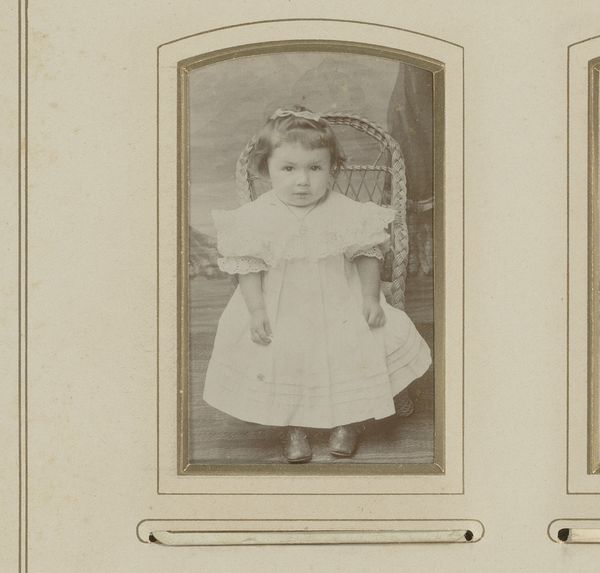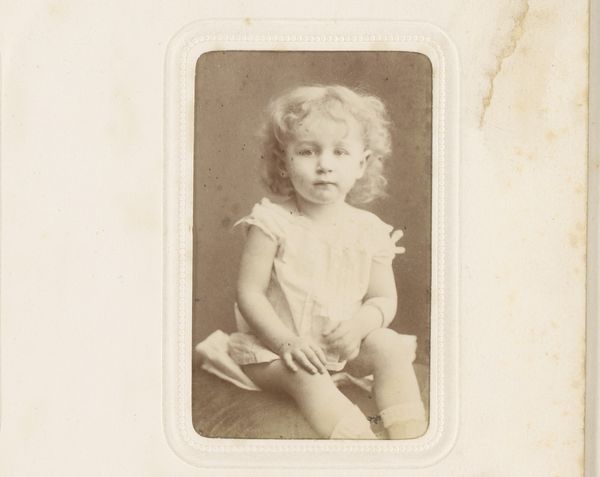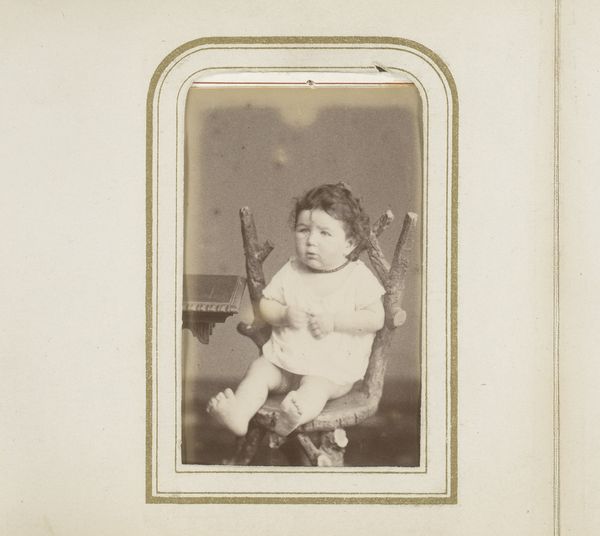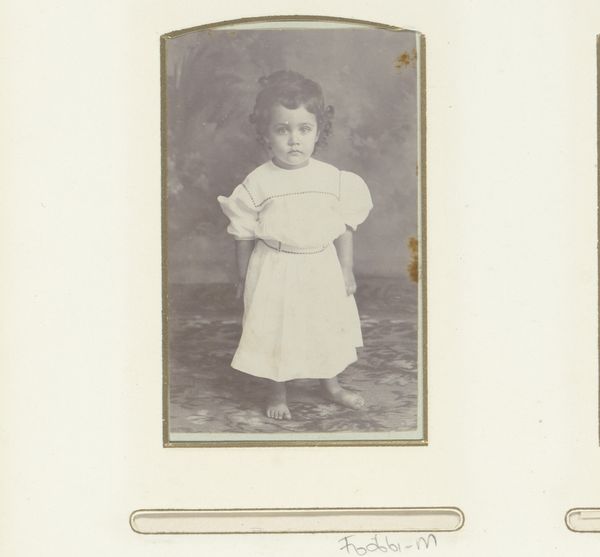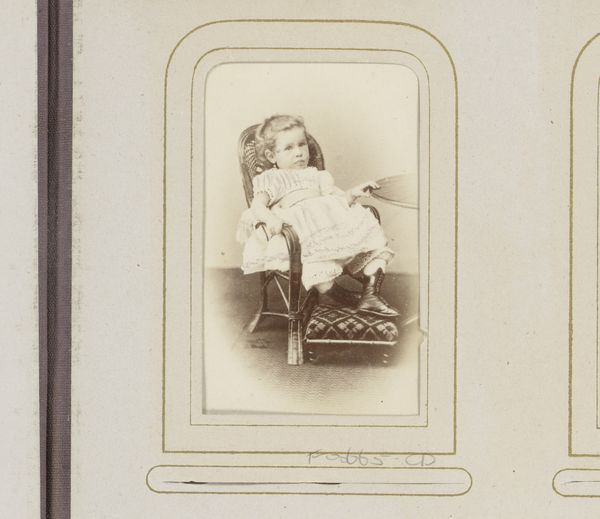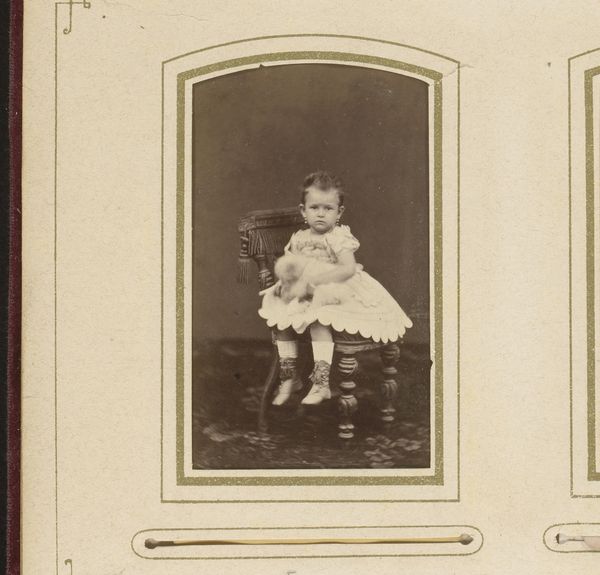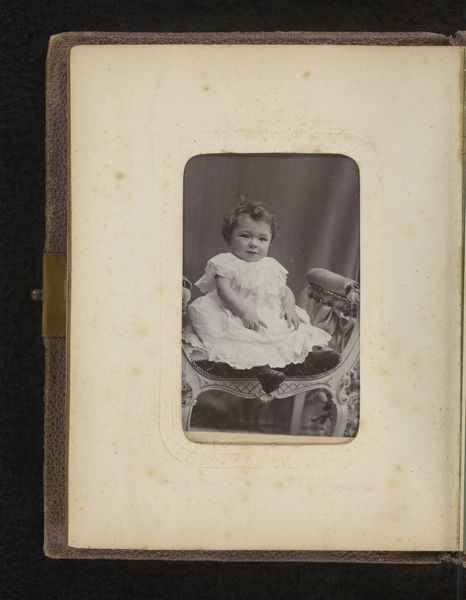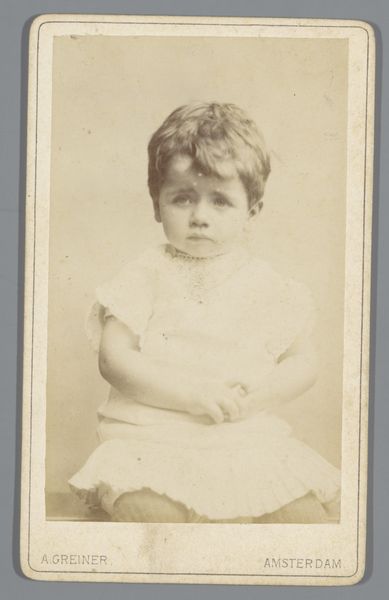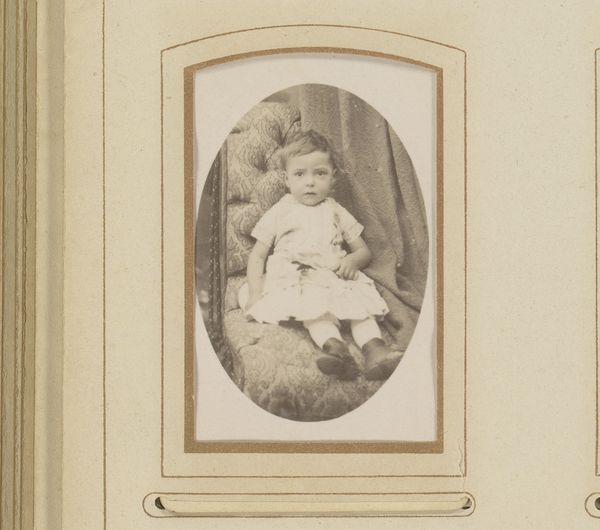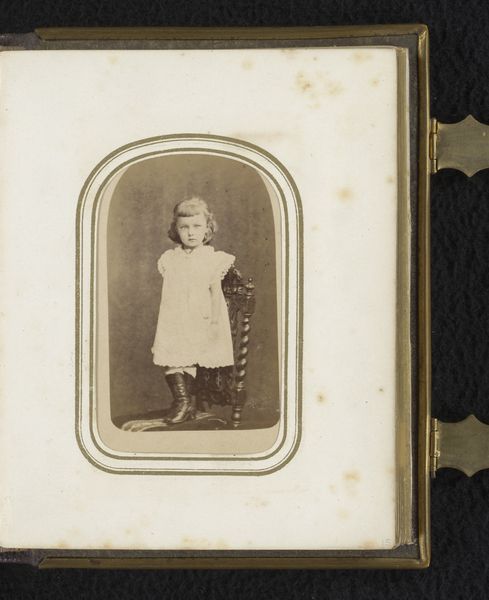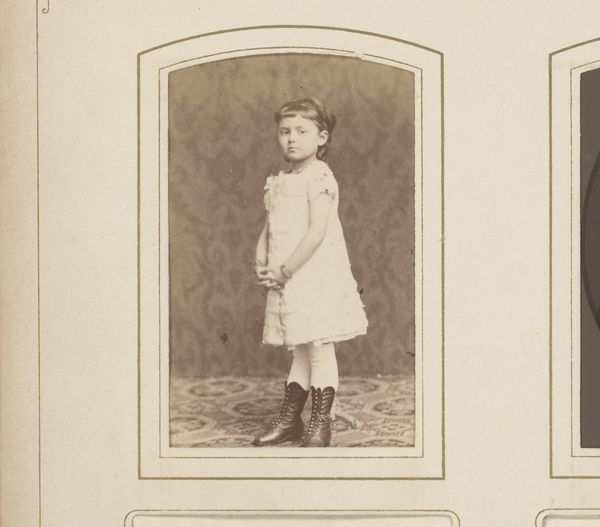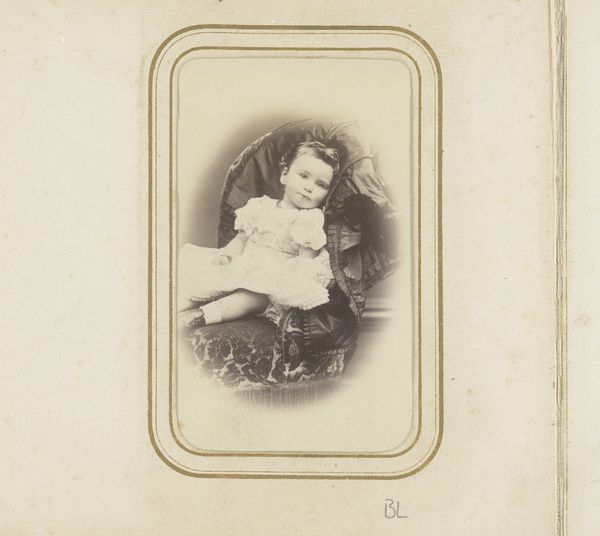
photography
#
charcoal drawing
#
photography
#
child
#
pencil drawing
#
19th century
#
charcoal
#
realism
Dimensions: height 104 mm, width 63 mm
Copyright: Rijks Museum: Open Domain
Editor: Here we have "Portret van een kind," or "Portrait of a Child," believed to be made between 1875 and 1900 by A. Taluffe. It’s a photograph, presented in a very period-specific mount. It’s… strangely unsettling, that child's gaze is so direct and almost accusing. What strikes you about it? Curator: That direct gaze, as you call it, is absolutely central. Consider the rise of photography in the late 19th century. Suddenly, portraiture was democratized, yet the sitter's agency remained limited. Here, this child, likely from a privileged background given the studio setting, is presented as an object for our observation. Do you think her expression is genuine, or carefully constructed? Editor: That's interesting… I assumed it was a genuine expression. Now that you mention it, I can see the photographer may have posed her. Was it common to pose children like this, and for what purpose? Curator: Absolutely. This falls into a complex history of childhood representation. On one hand, sentimental images of innocence were highly valued. But, the formal setting, the dress, and even the child's positioning reflect adult aspirations and expectations, a specific projection of idealized youth in a rapidly industrializing society. Did children really have power at the time? Perhaps in families, not to wider society, hence perhaps an artificial portrayal. Editor: So the picture is capturing a power imbalance between the photographer/viewer, and child as a kind of object or ideal? I see the cultural context so clearly now. Curator: Precisely. This image speaks volumes about the societal role – or lack thereof – given to children during the era. The photograph, as a relatively new medium, played a key role in shaping these perceptions. Editor: That changes my whole reading of it. Initially, I just saw a sad child, but now it speaks to issues about representation, expectation and a wider commentary on children at this point of time. Curator: Exactly. It’s a deceptively simple image loaded with complex cultural meaning. Hopefully it reminds us to view all portraits critically.
Comments
No comments
Be the first to comment and join the conversation on the ultimate creative platform.
